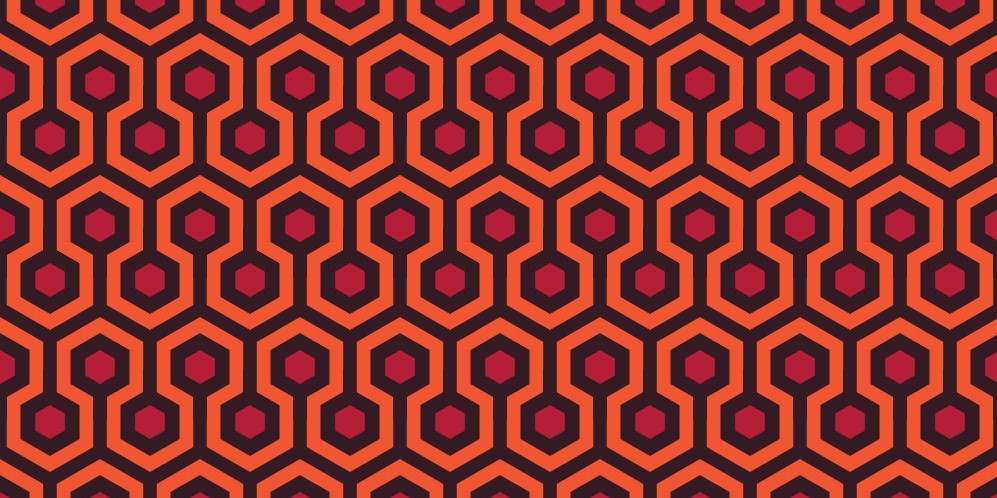by the editorial staff
For the first time, this column deals with an ornamental motif that does not exist in the real world but in fiction, film fiction to be precise. It is the wall-to-wall carpet of interlocking hexagons in the corridors of the Overlook Hotel, the fictional hotel in the Rocky Mountains of Colorado where Stanley Kubrick’s film The Shining (1980) is set. The film is an adaptation of Stephen King’s novel of the same name (1977). There is no descriptive element in the book that resembles the aforementioned rug, which must therefore be considered a cinematic invention due to its role in the collective imagination. In fact, the hexagonal pattern in The Shining already existed and was known as “Hicks’ Hexagon”, named after the British designer David Hicks (1929-1998) who created it in 1960. The popularity of Hicks’ Hexagon extended beyond carpets to wallpapers and textiles, and was used in a variety of colour palettes. But it is the version used in the tense, claustrophobic sequences of The Shining that has given it unparalleled popularity. It is a variation on the classic honeycomb theme, restructured so that each individual cell is connected to those in the same row and in a parallel row. The result is a series of geometric correspondences articulated on three levels: 1) the small red hexagons placed at regular intervals; 2) the dark brown paths that connect them in alternating double rows; 3) the orange paths that connect them in contiguous double rows. The neurotic over-excitement of the graphic texture is exacerbated by the range of bright, suffocating colours.
Homepage; Hicks' Hexagon, the Overlook Hotel carpet in "The Shining" by Stanley Kubrick (Wikimedia).


